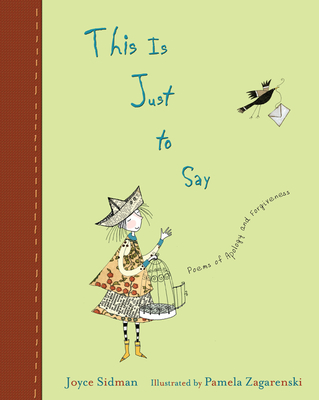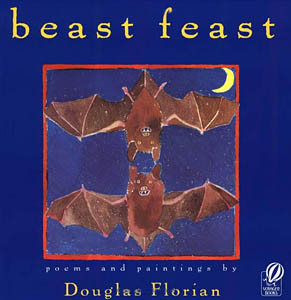
Bryant, Jen. The Right Word: Roget and His Thesaurus. Michigan: Eerdmans Books for Young Readers, 2014. ISBN 978-0-08028-5385-1
2. PLOT SUMMARY
Peter was a shy, reserved young boy who found the power of words early in life. At the young age of eight, he started his own book of lists. It began with something as simple as words he had learned in his Latin lessons, and quickly developed into the curiosity of finding the perfect word for those everyday interactions. It was just something Peter did during his journey through many relocations, growing into a man, becoming a doctor, a husband and a father.
Peter was a shy, reserved young boy who found the power of words early in life. At the young age of eight, he started his own book of lists. It began with something as simple as words he had learned in his Latin lessons, and quickly developed into the curiosity of finding the perfect word for those everyday interactions. It was just something Peter did during his journey through many relocations, growing into a man, becoming a doctor, a husband and a father.
3. CRITICAL ANALYSIS
Wow! The perfect marriage of story and illustration can be found in this picture book biography, The Right Word: Roget and His Thesaurus. The illustrations are just as important to the story as the text that tells this factual and fascinating account of Peter Roget's life. There are words everywhere, in different fonts, sizes and colors that many times matched the theme of the list it was a part of. The unique placement lends itself to be described as an "organizational chaos" of words and lists placed throughout the pages and 2-page spreads that draws the reader's attention and keeps them from wanting to turn the page, just to make sure they did not miss a single word.
Wow! The perfect marriage of story and illustration can be found in this picture book biography, The Right Word: Roget and His Thesaurus. The illustrations are just as important to the story as the text that tells this factual and fascinating account of Peter Roget's life. There are words everywhere, in different fonts, sizes and colors that many times matched the theme of the list it was a part of. The unique placement lends itself to be described as an "organizational chaos" of words and lists placed throughout the pages and 2-page spreads that draws the reader's attention and keeps them from wanting to turn the page, just to make sure they did not miss a single word.
The illustrations are vibrant, colorful and bold and just screams creativity. More specifically, it shows readers how the human brain thinks, with movement and transition in thoughts that can constantly be build upon. In addition, the words with the illustrations show not only facts, but emotions, personality and interests that make up the Roget as a person.
At the conclusion of the story, the author provides readers with a List of Principal Events, a timeline that shows the main events in Peter Roget's life, as well as how those dates align with important events in history. Furthermore, the author shares a personal note about her interest in writing the book and finding out about the real, historical details of Roget's life, followed by a personal note from the illustrator about the imagery within her collages and her need to use lists from Roget's notebooks and his first edition Thesaurus fro 1852.
Last, but certainly not least, Bryant has a page listing all of the selected bibliography and sources used in her research, along with a section titles 'For Further Reading' for those who enjoyed her book. This picture book biography is a must read!
4. REVIEW EXCERPT(S)
From Hornbook: "Apt language and ingenious imagery. . . . both decorous and warm.”
From Booklist: “In brilliant pages teeming with enthusiasm for language and learning, Bryant and Sweet joyfully celebrate curiosity, the love of knowledge, and the power of words.”
From School Library Journal: "Expertly researched and well written, Bryant’s narrative not only details the creation of the thesaurus; it also conveys a sense of Roget the man. . . . An excellent illustrated biography."
From Kirkus Review: "Bryant's prose is bright and well-tuned for young readers. . . . Sweet tops herself -- again! -- visually reflecting Roget's wide range as a thinker and product of the Enlightenment. Injecting her watercolor palette with shots of teal, scarlet and fuchsia, Sweet embeds vintage bits (ledger paper, type drawers, botanical illustrations and more), creating a teeming, contemplative, playfully celebratory opus. In a word: marvelous!"
Caldecott Honor Book
Texas Bluebonnet Master List for 2015-2016
Eureka! Honor Award 2014
CLSC Young Readers Selection for 2015
5. CONNECTIONS
From School Library Journal: "Expertly researched and well written, Bryant’s narrative not only details the creation of the thesaurus; it also conveys a sense of Roget the man. . . . An excellent illustrated biography."
From Kirkus Review: "Bryant's prose is bright and well-tuned for young readers. . . . Sweet tops herself -- again! -- visually reflecting Roget's wide range as a thinker and product of the Enlightenment. Injecting her watercolor palette with shots of teal, scarlet and fuchsia, Sweet embeds vintage bits (ledger paper, type drawers, botanical illustrations and more), creating a teeming, contemplative, playfully celebratory opus. In a word: marvelous!"
Caldecott Honor Book
Texas Bluebonnet Master List for 2015-2016
Eureka! Honor Award 2014
CLSC Young Readers Selection for 2015
5. CONNECTIONS
Gather other books from The Best 2014 Women-Illustrated Picture Books:
• Castillo, Lauren. Nana in the City. ISBN-10 0544104439
• Daly, Cathleen. Emily's Blue Period. ISBN-10 1596434694
Gather other Jen Bryant books to read such as:
• A Splash of Red: The Life and Art of Horace Pippin. ISBN-10 0375867120
• A River of Words: The Story of William Carlos Williams. ISBN-10 0802853021
• The Trial. ISBN-10 0440419867
Lesson Ideas:
- Vocabulary Journals- encourage students to keep a journal of vocabulary words they find interesting throughout the book, so they are able to research meaning and reuse the words later.
- Introduce synonyms as a way to add voice to a story
- Create a pictorial map using a biography or autobiography by other sources.





